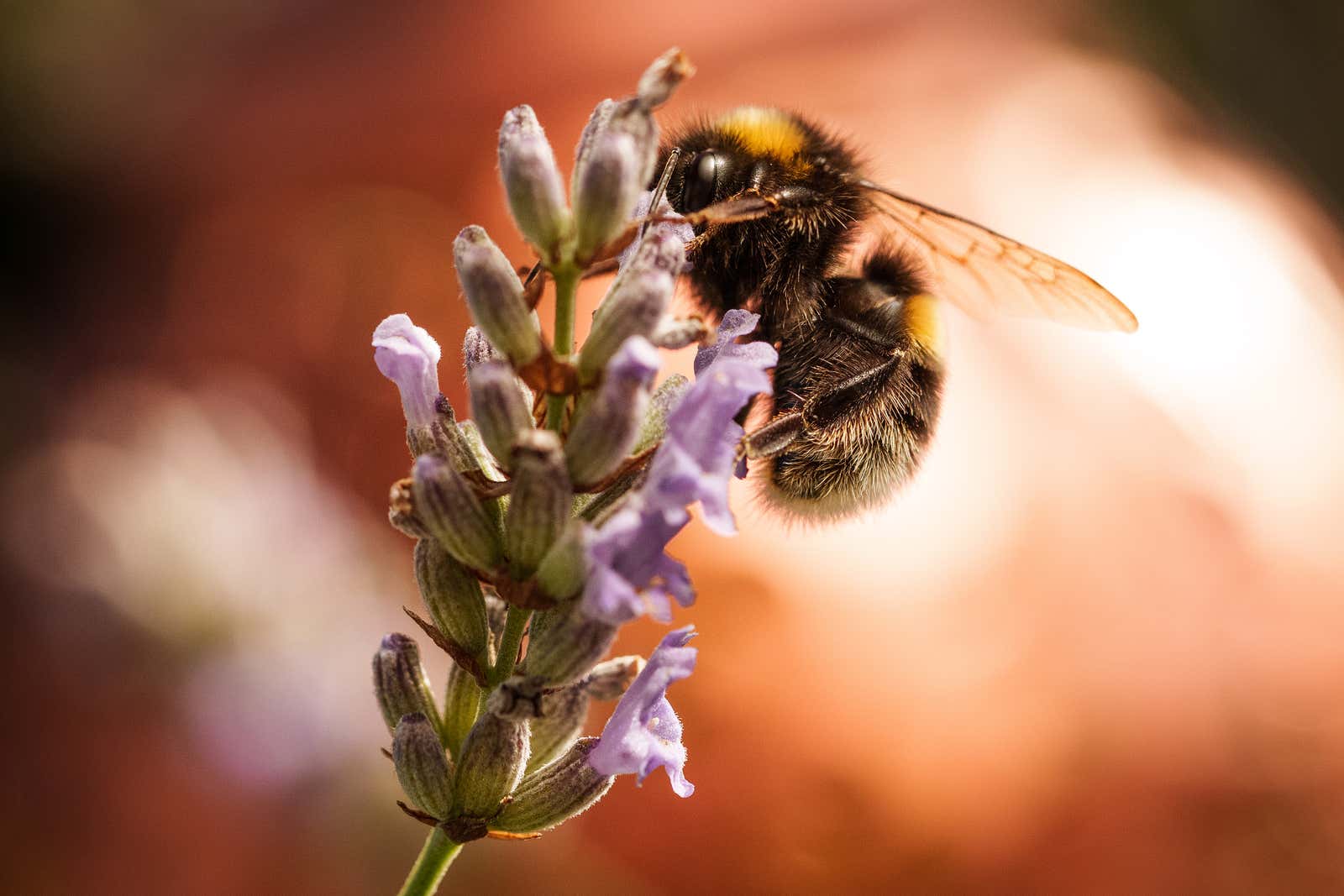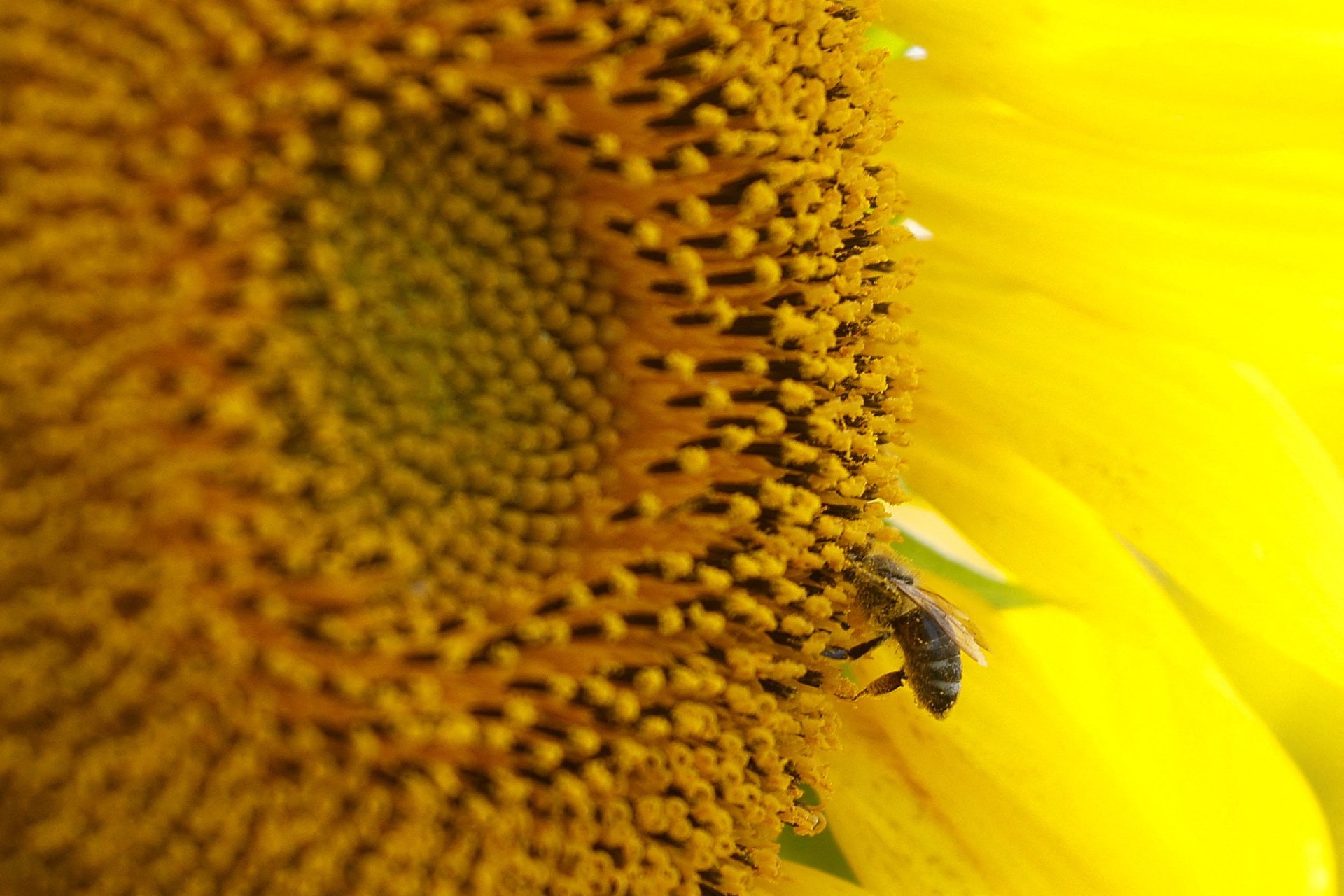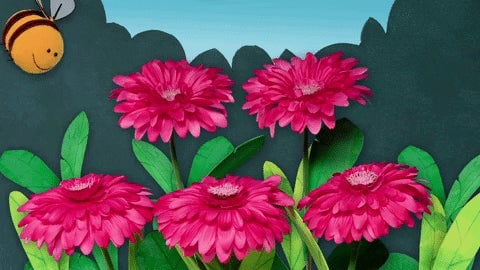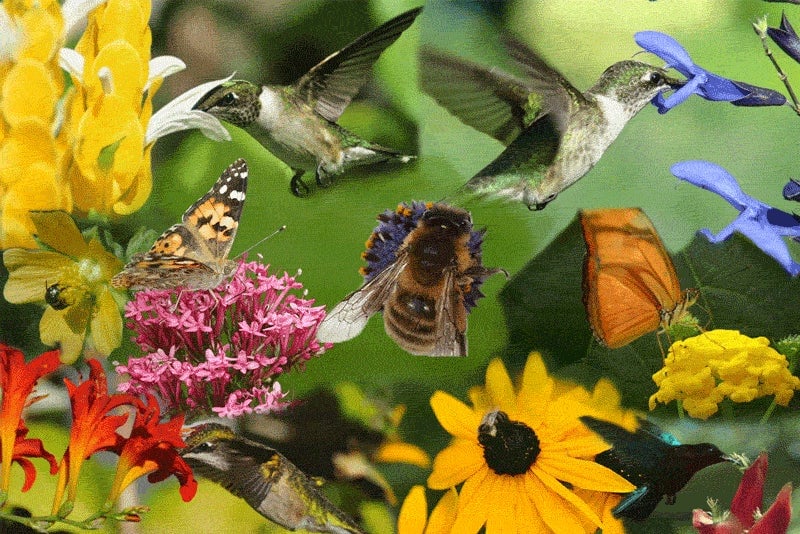Pollen: Nature's bounty
Life-providing, suffering-inducing little granules of terror.

The reason for the wheezin’
Suggested Reading
Birds do it; bees do it; even educated beetles do it. They all watch for the first real mark of spring, and with it, the great pollening. As flowers return and unfurl, they’ll reveal a familiar yellow-green powder that streaks its way across our fields, forests, and windshields.
Related Content
But for those who sneeze and wheeze as the world begins to bloom, pollen is a less-than welcome companion to spring. And scientists predict our future doesn’t hold much relief: With climate change, many pollen proliferators will have longer growing seasons, increasing levels of CO2 to feed on, and a profusion of pollen to produce.
So grab your Flonase: We’re venturing to the flower field. As the old adage goes, the dander you know is better than the one you don’t.
Let’s take a sniff around.
By the digits
1 million: Number of pollen grains a single ragweed plant can produce per day
40%: How much the amount of pollen produced during flowering season in the U.S. could rise by 2100
1 in 2: People expected to suffer from allergies by 2050, according to the World Health Organization
$40.4 billion: Expected value of the allergy treatment industry by 2025
9.7-12.0: A high pollen count, or how many pollen grains per cubic meter of air are collected over a 24-hour period, according to Pollen.com, which tracks results from Burkard and Rotorod measuring systems
40 pounds: Amount of pollen a single honey bee colony can gather in one year
>$15 billion: Estimated value that bee pollination contributes to U.S. crops each year
~20,000: Known bee species in the world
Explain it like I’m 5!

The pulse of pollination
The flora and the fauna of the world rely on pollination, or the art of flower fertilization. You can find its impact right on your dinner plate: One in three bites of food you eat is the product of pollination.
Palynologists — the official name for pollen scientists — will tell you the act of pollination is simple. A plant can be self-pollinating, which means it fertilizes itself, but it’s more often cross-pollinating, which means it needs an agent to bring the pollen to another plant of its species. That’s where pollinators come in. Those can be the birds and the bees, yes, but also butterflies, beetles, and bats. Wind and water act as pollinators, too, when they pick up and carry pollen on their own streams.
Pollinators unwittingly take clingy pollen — the bright powder you can spot at the center of a flower — from a flower’s anthers (or the male portion of the plant) to another flower, where the pollen will meet the stigma (the female portion). That’s how a flowering plant is fertilized, which makes it able to yield fruit, drop seeds, and grow more plants. While we usually think of pollen as a shocking, sneezy yellow, it actually comes in a range of shades: You can find powders in vibrant hues like orange, pink, blue, green, and purple.
Now, though, pollinators may have harder work ahead. Thanks to climate change, our warming planet is expanding growing seasons for pollen producers.
By the end of the century, pollen season in North America could arrive 40 days earlier and last 19 days longer than our current calendar. And it has major implications for public health. Those who suffer from seasonal allergies will face not just a rise in pollen concentrations, but also pollutants that make allergic reactions more potent.
That’s not the only way your fellow humans are to blame for your pollen problems — urban developers have taken to planting more male trees for perceived hardiness reasons. This particular gender imbalance is literally making us ill.
As for why our bodies react so strongly to the tiny granules — it’s pretty simple. Pollen in itself isn’t harmful, it’s just that it’s very tiny, very airborne, and very everywhere. Immune systems sometimes log those kinds of invaders as threats and program themselves to get the particles out of your system the minute they appear.
Fun fact!
Magnolia trees are so old that they predate bees. In fact, they coexisted with dinosaurs, who grazed under their waxy leaves. That’s why they’re pollinated by beetles, the descendants of Cretaceous-era insects.
Person of interest

William Frankland
One of the twentieth century’s top allergists “remained remarkably vigorous to the end, despite having come close to death several times in his long life,” as one obituary reads. Those near-fatalities included a premature birth in 1912, a bout of bovine tuberculosis in childhood, and a stretch as a Japanese prisoner of war while serving in World War II. But after becoming an allergen scientist, he pulled off his most daring escape when he turned his experiments upon himself.
It was while researching allergic reactions to insect bites that Frankland unwittingly set a near-mortal melodrama in motion. The unnervingly brave human theorized that one could become desensitized with continued exposure. So he began his own trials. Each week, he allowed the bloodsucking South American insect Rhodnius prolixus to bite his arm. At the eighth bite, Frankland was shocked into anaphylaxis — a full-body allergic reaction, from which he was saved when a nurse injected him repeatedly with adrenaline.
Frankland dedicated his scientific career to the treatment of allergies, particularly in regards to pollen and hay fever. He ran one of the world’s largest pollen farms, which grew allergens for medical research; pioneered pollen counts, which measure and categorize the amount of powdery irritants found in the air for weather forecasts; and was an early proponent of allergy shots, which inject sneezy sufferers with allergens to desensitize their reactions.
Listen to this!
POLLEN
In 2018, professional music curators at Spotify began prepping a first-of-its-kind curation: A playlist that offered art beyond genre. Instead of hewing to Billboard categories, the playlist was built for cross-genre music discovery, with mixes that cull, collect, and collage up-and-coming artists from a sweep of what Spotify calls micro-genres. Those can include dubs like Mexican dream-pop, Chicago underground house, and Japanese chillhop. (And for an exhaustive list of more than five thousand micro-genres, you can click over to Every Noise at Once, a website run by former Spotify genre taxonomist Glenn McDonald.)
After debating what to name the product for the better part of a year, the team settled on its eventual appellation: POLLEN. Today, the playlist is one of Spotify’s biggest hits, queuing up more than 1.32 million likes from users across the globe.
Pop quiz

Bumble bees have been called living tuning forks, buzzing at a specific tone as they propel pollen grains. What note do they hum?
- A-flat
- Low B(ee)
- Middle C
- D-sharp
Buzz (or sneeze) your way to the bottom of this email to find the correct answer.
Take me down this 🐰 hole!
In 2013, visitors to the Museum of Modern Art’s airy atrium in New York City encountered a luminous work: A shocking chartreuse square, measuring 18 by 21 feet, glowed from the ground. “The color is so radiant,” an art critic wrote at the time, “that you might think for a second that it is a projection of pure yellow light from above.”
But this square wasn’t the scion of a sun ray. Instead, it was made of pollen.
The piece, titled Pollen from Hazelnut, was the work of Wolfgang Laib, a German artist whose other handicrafts make use of natural materials like beeswax and milk. But his pollen piece was a lasting labor of love: Harvested by hand in the southern German village where he lives and works, Laib’s pollen was the product of careful collection from local wildflowers for more than three decades. When it came time to exhibit, the pollen was transported overseas, where Laib sifted it on to exhibition floors with a small sieve.
“Pollen is the potential beginning of the life of the plant,” Laib has said. “It is as simple, as beautiful, and as complex as this.”
Poll

How equipped are you for the pollening?
🌸 I take to spring like a butterfly to nectar
🌷 I might sense an itch or two
🌼 I’ve got Benadryl on speed dial
Dip on into this poll like a bee to a flower.
💬 Let’s talk!
In last week’s poll about air fryers, 51% of you said you just use an oven instead! But for those of you who do use air fryers, 34% use them for frozen french fries, 12% for chicken wings, and 3% for egg rolls.
Today’s email was written by Gabriela Riccardi, edited and produced by Annaliese Griffin and Susan Howson. This obsession originally ran April 19, 2023.
The correct answer to the quiz is C: Middle C. Sounds worthy of a symphony.